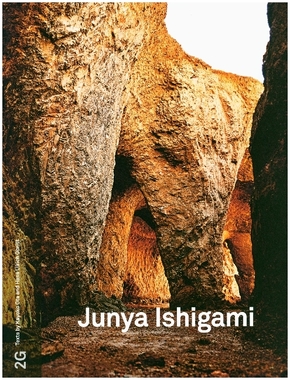Junya Ishigami
| Verlag | Verlag der Buchhandlung König |
| Auflage | 2019 |
| Seiten | 160 |
| Format | 22,8 x 30,5 x 1,8 cm |
| Gewicht | 788 g |
| Artikeltyp | Englisches Buch |
| Reihe | 2G, International Architecture Magazine 78 |
| ISBN-10 | 3960980965 |
| EAN | 9783960980964 |
| Bestell-Nr | 96098096A |
Diese 2G Monografie legt erstmals sachliche Informationen zum Werk des japanischen Architekten Junja Ishigami vor, der sein Büro mit nur 31 Jahren gegründete. Sein Werk zählt zu den aktuell meist diskutierten Arbeiten der Architekturwelt. In den begleitenden Interviews mit Hans-Ulrich Obrist und Kayoto Ota erklärt er seine Einflüsse, Vorbilder und sein Verständnis von Architektur.
Die Publikation stellt seine bis heute realisierten Projekte vor und dokumentiert sie mit Plänen, Aufschnitten und vielen Fotografien: Architekturbiennale Venedig 2008, Kanagawa Institute of Technology, Botanical Fram Garden Tochigi, Multi Confessional Chapel in China, Yamamoto Building New York, sowie diverse Wohnhäuser. Immer wieder überrascht der Architekt mit neuen Formen und Materialien. Junya Ishigami ist der diesjährige Architekt des Sommerpavillions der Londoner Serpentine Galleries.
The first time Junya Ishigami made himself known in Europe, with his proposal for the Japan Pavilion for the Venice Architecture Biennale 2008, he was a young an almost unknown architect who had worked for several years with Kazuo Sejima and had not long with his studio junya.ishigami+associates, founded in 2004. In the Venice pavilion, Ishigami filled all the interior walls of the pavilion with delicate a somehow naïf drawings of gardens and decided to build several greenhouses with real gardens in the outdoor gardens of the building. The following year, he finished the Kanagawa Institute of Technology Workshop, and with only two works he was acclaimed as one of the most innovative proposals of the recent Japanese architecture. Forcing the limits of transparency and lightness in the beginning, his latest works explore in a conceptual way the relationships between the built matter and the nature, in works such as the Botanical Farm Garden in Tochigi, a multi confessional chapel in China or the house and restaurant for a chef in Japan, where the exploration of the tectonic merges with the telluric and the nature.

